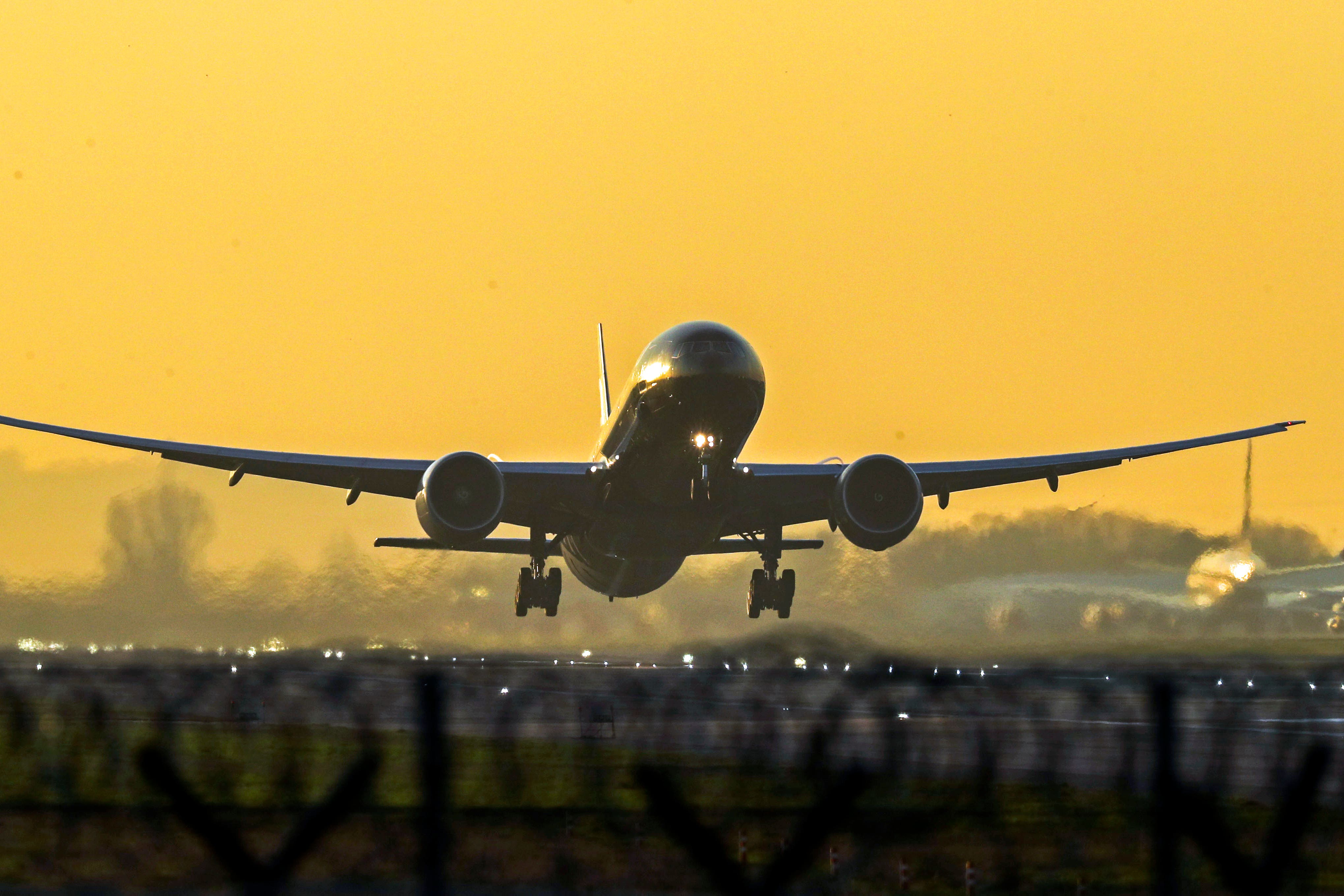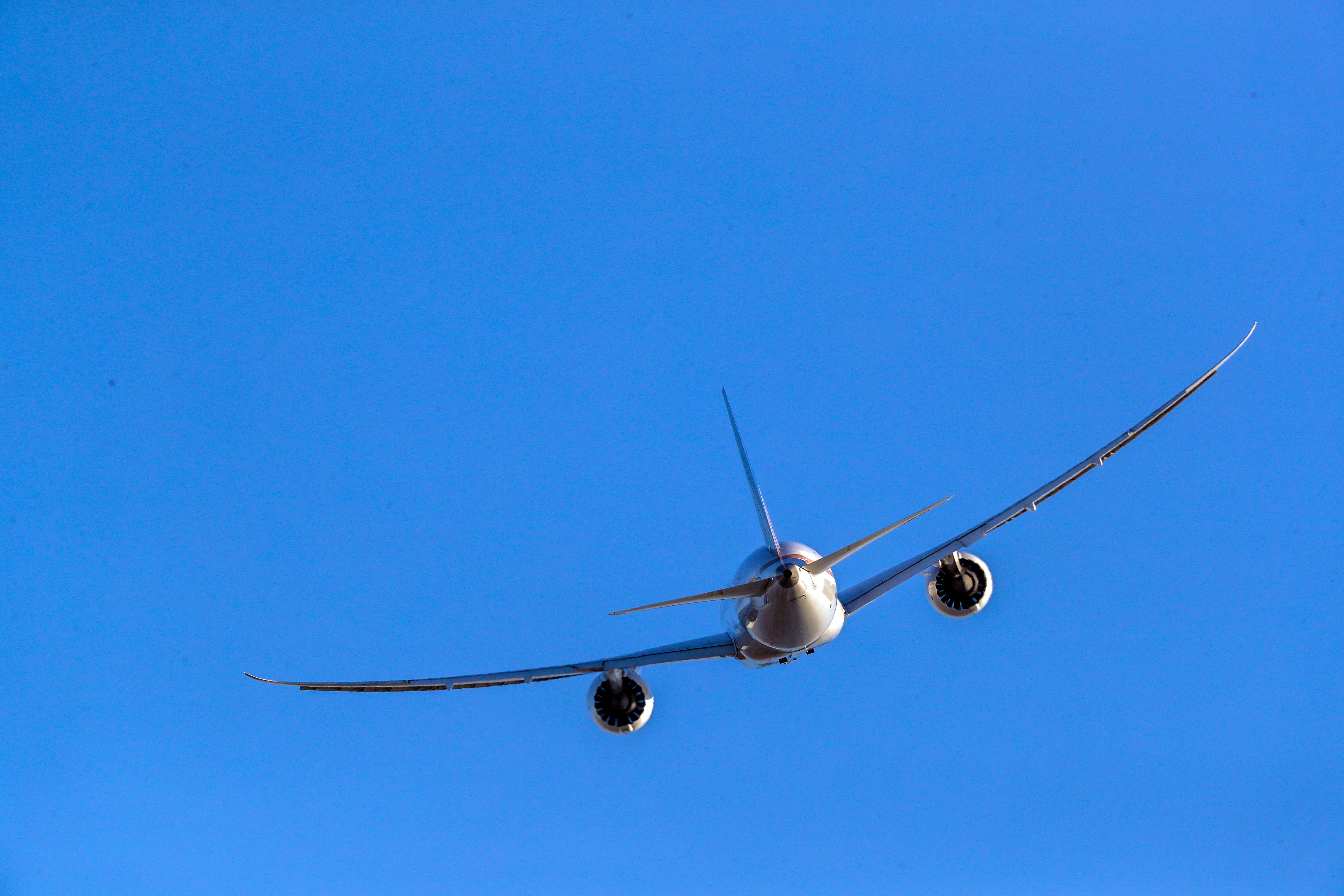Warning to millions as tiny particles emitted by planes put public health at risk, study finds
People living within 20km of airports are being exposed to ‘ultrafine particles’ from aviation

Your support helps us to tell the story
From reproductive rights to climate change to Big Tech, The Independent is on the ground when the story is developing. Whether it's investigating the financials of Elon Musk's pro-Trump PAC or producing our latest documentary, 'The A Word', which shines a light on the American women fighting for reproductive rights, we know how important it is to parse out the facts from the messaging.
At such a critical moment in US history, we need reporters on the ground. Your donation allows us to keep sending journalists to speak to both sides of the story.
The Independent is trusted by Americans across the entire political spectrum. And unlike many other quality news outlets, we choose not to lock Americans out of our reporting and analysis with paywalls. We believe quality journalism should be available to everyone, paid for by those who can afford it.
Your support makes all the difference.Particles from planes are putting millions of people across the UK at risk of serious health conditions, a new study has found.
Environmental group Transport & Environment (T&E) said about six million people – around 9% of the UK population – that live within a 20km radius of London Gatwick, Stansted, Heathrow and Manchester airports are being exposed to “ultrafine particles” (UFPs) from aviation.
UFPs are below the size of 100 nanometres in diameter – approximately 1,000 times smaller than a human hair – and can penetrate deeply into the human body, having been found in the blood, brain and even placentas.
In Europe as a whole, 52 million people are affected by the 32 busiest airports, according to findings from the study carried out by Dutch consultancy CE Delft on behalf of T&E which was released on Tuesday.
Exposure to UFPs can be linked to the development of serious and long-term health conditions, including respiratory problems, cardiovascular effects and pregnancy issues, the study said.
Exposure may also be associated with 280,000 cases of high blood pressure, 330,000 cases of diabetes and 18,000 cases of dementia in Europe.
The researchers found people living within a 5km radius of an airport breathe in air that contains, on average, anything from 3,000 to 10,000 ultrafine particles per centimetre cubed emitted by aircraft, the researchers found.
People living in busy city centres are exposed to similar ranges of ultrafine particles – 3,000 to 12,000 particles per centimetre cubed.

The study said using “better quality” jet fuel can reduce UFPs by up to 70% as the amount of emitted from planes depends largely on the composition of the fuel.
Cleaning this fuel happens through a process called hydrotreatment, which has been used for decades to remove sulphur from fuels for cars and ship fuels, and could cost less than 5p per litre of fuel, researchers said.
They told reporters that the added cost to industry is a likely reason that jet fuel standards for planes have not been improved.
Other recommended measures to reduce UFPs include reducing air traffic and aviation’s exponential growth, as well as using cleaner technologies like sustainable aviation fuels (SAFs) and zero-emission aircraft that release much fewer pollutants.
While the World Health Organisation warned that UFPs are a pollutant of emerging concern 15 years ago, there is no specific regulation on safe levels in the air.
Matt Finch, T&E’s UK policy manager, said: “This is a hidden health crisis.
“Governmental failure to address the spiralling growth of the aviation sector means that more and more people are suffering.
“We cleaned up road transport decades ago, but the aviation industry, as ever, has been dragging its feet.
“Once again it’s a case of prioritising profits rather than pollution.”
Tim Johnson, director at the Aviation Environment Federation, said: “Communities living around airports have been raising the alarm around air pollution for years and this report vindicates their position that more should be done.
“With public health already impacted by exposure to aircraft noise, UFPs from aircraft create yet another environmental health concern.”
Mr Johnson called for a “long overdue” review of UK air pollution, noting the last evaluation took place more than 20 years ago.
Henry Gregg, director of external affairs at Asthma and Lung UK, said: “This new study from Transport & Environment is deeply worrying for the health of Londoners and anyone living near an airport across the UK.
“We need more government action to address and reduce the health impact of air pollution emissions to help all Londoners breathe cleaner air, including the estimated 580,000 people living with asthma and chronic obstructive pulmonary disease (COPD) across Greater London.”